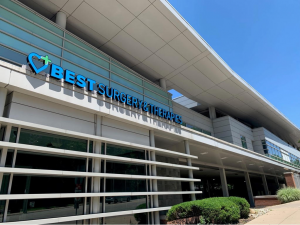Hip Fractures
Hip fractures are a common source of pain and mobility problems, especially common with age. The most frequent cause of hip fractures are falls amongst patients 65 or older, but they can also occur in younger people who experience trauma or sports-related injuries. Surgery is typically required for the successful treatment of hip fractures but in some cases, the condition can improve on its own with the help of conservative therapies.
Causes
The hip joints connect the upper body to the legs, making them a critical part of the musculoskeletal system that enables basic movement, thus resulting in a high degree of stress put on the hips every day. This stress combined with the loss of coordination and weakening bones is why falls can so often lead to fractured hips among the elderly population.
Other causes of hip fractures can include repetitive motion injuries that lead to stress fractures. This is particularly common among endurance athletes such as distance runners. Although less common, hip fractures can also occur as a result of trauma caused by a high impact, such as an automobile accident or a tackle.
These kinds of fractures can occur in both the ball of the hip (upper femur) or the socket in the pelvis. Another common location would be the thin part of the femur just below the ball, known as the femoral neck.
Conservative Treatment
Although uncommon, a minor fracture that does not involve displacement or misalignment in younger and healthy patients can be treated without the need for surgery. Patients will be instructed to rest, use crutches to avoid putting weight on the hip, and take pain medication as needed.
After the fracture has healed, physical therapy and rehabilitation can help strengthen the hip and increase a healthy range of motion. Not only is this important for regaining hip function, but it can also prevent re-injury and compensatory injury as normal activities are resumed.
Symptoms
Hip fractures are usually immediately painful upon impact, with the pain being localized in the upper leg and groin area. After the fracture, patients will generally be unable to stand or put weight on the affected leg. However, patients should be able to move the lower extremities in most cases of hip fractures, as long as there is not a fracture at a different point.
Stress fractures of the hip may be harder to pinpoint and are often first experienced as mild upper leg or groin pain that gradually worsens. Any symptoms should be diagnosed as soon as possible, as prompt treatment is required for any type of hip fracture to heal properly and not worsen.
Diagnosis
Patients with acute hip fractures are often transported by ambulance to an emergency room or urgent care facility where they receive a prompt diagnosis. The physician will perform a visual examination and try to attain as much information about the injury as possible. The patient’s medical history will also be reviewed to find out if any conditions could increase the likelihood of hip fracture occurring. In most cases, X-rays will be used to confirm the diagnosis of a hip fracture and identify the exact location of the break.
In the event of a stress fracture, patients may visit a physician, complaining of hip, groin, and/or leg pain. The doctor will then perform similar steps, including a hands-on examination and discussion of symptoms and regular activities to determine if a hip fracture or other injury is the source of pain and mobility.
Surgery
For the majority of patients dealing with hip fractures, surgery will be recommended. This procedure should be performed as quickly as possible, usually within days of the diagnosis.
The type of procedure that will be performed depends on the location and severity of the hip fracture. In some cases, the bone can be reset with hardware, but in other situations, a full or partial hip replacement may be required. This is more commonly seen in older patients with deterioration in the joint.
Surgeons are often able to perform hip replacement procedures for fractures with techniques and technology designed to limit the disruption of surrounding soft tissue. This allows for an outpatient procedure and the ability for patients to become mobile and begin the important rehabilitation process in a shorter time frame. After surgery, it is crucial for patients to become mobile and start moving the hip as early as safely possible. Physical therapy and rehabilitation are absolutely critical for patients recovering from hip surgery.
Reach Out to BEST Health System
At our state-of-the-art facilities, our caring and experienced team of treatment professionals help patients dealing with hip fractures start their journey toward relief. To learn more about our wide assortment of treatment options, contact us today.
If you have experienced any of these symptoms or recieved a diagnosis and need treatment, BEST can help. Take the first step towards relief today.
Related Articles
What is Hip Bursitis with BEST Health System
What is Hip Bursitis? Hip pain comes in many forms and sometimes it can be treated at home, but if you are dealing with constant […]
A Map of BEST Health System's Ohio Locations
BEST – The Health System Redefining Care Throughout Ohio BEST Health System is a modern healthcare system with accessible locations throughout the state of Ohio. […]
5 Things You Didn't Know about Joint Care
Joint pain can be caused by a number of different conditions, the most prevalent being arthritis. If it is severe it can keep your day-to-day […]
Arthritis of the Spine Surgery Alternatives
Treating Osteoarthritis of the Spine For most patients with arthritis of the spine, surgery is not the most effective method for treating their condition. Osteoarthritis […]
Stopping the Spread of Spinal Arthritis
Arthritis of the Spine Arthritis of the spine is a condition that can occur when the spinal joints deteriorate, leading to inflammation. It is fairly […]
Yoga Poses for Individuals with Arthritis
Conservatively Treating Arthritis Your arthritis of the spine treatment does not have to include surgery or pain medication. While these options can be beneficial, some […]





